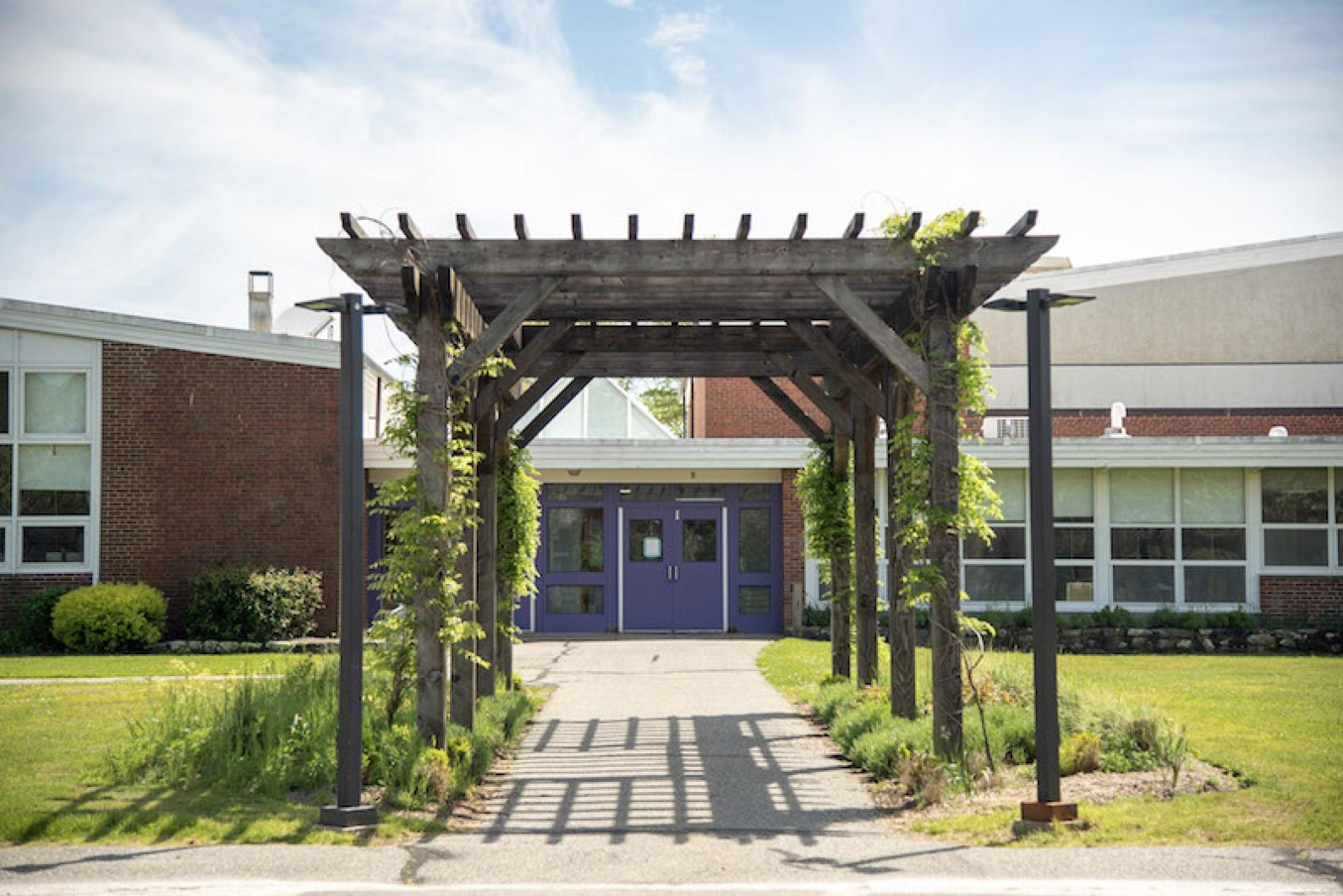At a heated meeting Monday, a sharply divided Martha’s Vineyard Regional High School district committee voted 5-4 to approve a hybrid learning plan with a start date of Nov. 30.
The re-entry plan was proposed by high school principal Sara Dingledy as part of a recent call for expanded school reopening Islandwide made by school superintendent Matthew D’Andrea.
The high school has been largely remote since school began in September, with a plan to incorporate more in-person instruction into the curriculum in November. But as elementary school across the Island set plans for in-person learning this week, the high school’s efforts have been complicated by the school’s large population and small space constraints.
Weighing safety and educational concerns, on Monday Ms. Dingledy came before the committee with a hybrid learning plan that calls for all students to be divided into four cohorts, two of which will alternate in-person learning days with online instructions Monday through Thursday. Under the plan, a third cohort for students designated high-need will continue to receive in-person support, while a fourth will remain fully remote. All students will learn from home on Fridays, Ms. Dingledy said.
The plan was guided by feedback from teachers and students, as well as the result of a recent survey to the school community that showed a slight majority of 53.2 per cent preferring an in-person learning option, Ms. Dingledy said.
Ms. Dingledy said the plan, formulated last week, initially proposed start dates in early November, but in light of the recent spike in virus cases on the Island, she suggested beginning Nov. 30 instead.
Ms. Dingledy also cited concerning reports of large Halloween parties among high schoolers last weekend as a reason to stall planning.
In a bluntly-worded email that went out this week, the principal canceled the remaining weeks of fall extracurriculars due to exposure risks posed by the gatherings and appealed to parents to hold “difficult conversations” with their children about the consequences of large gatherings and community responsibility.
In another wrinkle, Ms. Dingeldy said the plan did not receive the majority backing of the all-Island health and safety subcommittee — whose approval has been integral to school reopening plans. According to Edgartown health agent Matt Poole, the recent virus spike, as well as the inability to enforce six-foot social distancing in the building were leading factors in the decision. Mr. Poole also cited the absence of a coherent testing plan as a hindrance in getting high school students under one roof again.
The hybrid plan saw outpouring of criticism from committee members, parents and high school students alike, many of whom opposed the plan’s slow reintegration relative to other school districts in the commonwealth.
“We have deferred it over and over and over again,” said Celia Gillis, a parent. “You guys have failed [the students]. Every decision you’ve made, you’ve failed to listen to the governor, you’ve felt like you’ve known more waiting for testing when no other community has testing.”
There were equally sharp critiques from community members worried about the exposure risk of a hybrid plan and the disruption of routine.
“It really gives me pause . . . about the ability to create an actual safe work environment, and educational environment,” said Derek Fairchild-Capaletti.
Committee member Amy Houghton echoed the sentiment. “At this point, given that we are at the highest testing positive rate since the pandemic started on this Island, it seems absolutely inappropriate to be considering putting kids and staff back in the buildings,” she said.
A handful of students chimed in, some requesting a return to in-person, expressing fear that cheating had become commonplace online, while others felt the proposed plan constituted an untenable workload.
But after much debate and no clear consensus, the committee voted 5-4 to approve the plan. Committee members Skipper Manter, Kathryn Shertzer, Amy Houghton and Kris O’Brien voted nay.
The committee then began another tense discussion about the plan’s timeline, with parents and committee members debating the importance of returning to school immediately with concerns over the exposure risk posed by holiday traveling and the return of college-aged students to the Island. Parent Gwyneth Wallace suggested holding off until the second semester. “I think if you wait until the switch after the switch of the semester, in mid-January, all that holiday traveling is done and everybody’s back and resettled,” she said.
Others, including committee member Mike Watts, expressed grave concern over agreeing to a timeline with no metrics about a virus-case tipping point for the schools.
“If we’re going to do this game, somebody needs to put a stake in the sand and say, a positivity rate above X means this and a positivity rate below,” said Mr. Watts. “We need to get to an objective number or we will chase this forever.”
Some committee members suggested following the state’s color-coded virus map or choosing a maximum positive case-load number, but Mr. Poole said with no clear population count and a state grading system that rates each Island town separately, hard metrics were a challenge.
“The really challenging conversation we’re going to have is at some school committee meeting,” Mr. Poole said. “We’re going to have six towns coded four different colors. And that will make tonight pale in complexity.”
Again with no clear consensus, the committee put the question to a vote, agreeing 5-4 in favor of a Nov. 30 start date. The vote split along the same lines.
In brief other business Monday, the committee heard updates on the school’s expenditure and revenue reports, both of which are on target, according to business administrator Mark Friedman.
The committee also voted unanimously to accept four academic and extracurricular grants — from the Rural Education Achievement Program, the Sound Foundation, the state’s Systems for Student Success and the Martha’s Vineyard Hospital.







Comments
Comment policy »